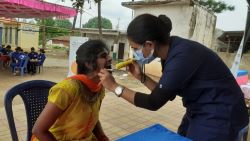Lung Cancer Day, observed on August 1, 2023, represents a defining moment in the fight against lung cancer. This important event seeks to educate people about lung cancer, its prevalence, early warning signs, and demographics, as well as the primacy of early detection and treatment.
Lung Cancer: Prevalence and Statistics
Lung cancer is still a major global health concern, claiming millions of lives each year. Lung cancer was responsible for 2.2 million deaths in 2020, accounting for 13% of all cancer deaths worldwide, according to the World Health Organization (WHO). Lung cancer is predicted to impact 1.8% of the global population, with the highest proportion in North America, Europe, and East Asia. Recent findings indicate that lung cancer incidence rates are gradually decreasing in some regions, owing primarily to successful anti-smoking campaigns and increased public consciousness about the risks of tobacco. However, in some areas, primarily in low and middle-income countries, the prevalence of lung cancer is still increasing, owing mainly to factors such as tobacco use and air pollution.
Unusual Early Signs and Symptoms of Lung Cancer
Early detection is critical for successful treatment of lung cancer and clinical outcomes. While persistent coughing, chest pain, and breathlessness are well-known symptoms, there are also several lesser-known early warning signs that people should be aware of:
- Unexplained Persistent Cough: If you have a sustained cough that lasts for weeks or even months, it is critical that you see a doctor.
- Recurrent Respiratory Infections: Frequent stints of respiratory infections, such as bronchitis or pneumonia, may indicate an underlying lung problem that needs to be addressed.
- Unexplained Weight Loss: Unanticipated and unexplained weight loss, especially if accompanied by a loss of appetite, necessitates further investigation.
- Fatigue and Weakness: Feeling unusually tired and weak, even after adequate rest, may be an early warning sign that should not be ignored.
Lung Cancer Prevalence Among Youngsters and Non-Smokers
Lung cancer, contrary to popular belief, does not differentiate solely on the basis of age or smoking status. Recent data implies a worrisome trend of rising lung cancer incidence among young people, including those who have never smoked. This suggests that there are additional risk factors at work, and it is critical to be aware of them:
- Exposure to Secondhand Smoke: Nonsmokers who are subjected to secondhand smoke have an increased risk of developing lung cancer.
- Pollution of the atmosphere: Staying in areas with excessive pollutants in the air can be harmful to lung health, raising the risk of lung cancer.
- Genetic Predisposition: Some people may be predisposed to lung cancer genetically, making them more vulnerable to the disease even in the lack of traditional risk factors.
Is Lung Cancer More Common Among Women than Men?
Historically, men were more likely to develop lung cancer, owing to higher male smoking rates. However, the disparity has narrowed over time, and female lung cancer incidence rates have increased. Lung cancer occurred at a rate of 11.6 per 100,000 women in 2020, compared to 13.3 per 100,000 men. Several elements have contributed to this shift:
- Factors of Behavior: Changes in smoking behaviour, with more women smoking in recent decades, have had an impact on lung cancer rates.
- Hormonal Influences: According to some studies, hormones may play a part in the formation of lung cancer, affecting its pervasiveness in women.
- Biological Distinctions: Disparities in lung anatomy and biology between men and women may influence susceptibility to lung cancer.
The Role of Early Detection and Treatment
When it comes to lung cancer, early detection is everything. Regular screenings with imaging tests such as CT scans or X-rays can detect lung abnormalities before symptoms appear. Furthermore, biomarker testing allows doctors to identify specific mutations in lung cancer cells, enabling targeted therapies and personalised treatment plans. A great deal of progress has been achieved in lung cancer treatment options in recent years. Immunotherapy uses the body’s immune system to fight cancer cells, whereas targeted therapies target specific genetic mutations. Furthermore, ongoing research and clinical trials indicate that the field will continue to advance.
Spreading Awareness on Lung Cancer Day
Lung Cancer Day 2023 will highlight a number of initiatives and events aimed at increasing awareness and funding for lung cancer research and support programmes. People have the ability to make a difference in the lives of those directly impacted by this devastating disease by actively engaging in these campaigns. Every effort counts, whether it’s organising community events, sharing educational resources on social media, or donating money to reputable lung cancer charities. We can work together to make lung cancer preventable, treatable, and, eventually, curable.
Dr. Sunil Kumar K, Lead Consultant – Interventional Pulmonology, Aster CMI Hospital
 Newspatrolling.com News cum Content Syndication Portal Online
Newspatrolling.com News cum Content Syndication Portal Online







